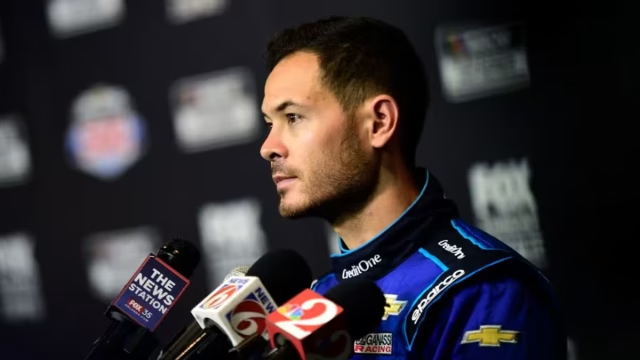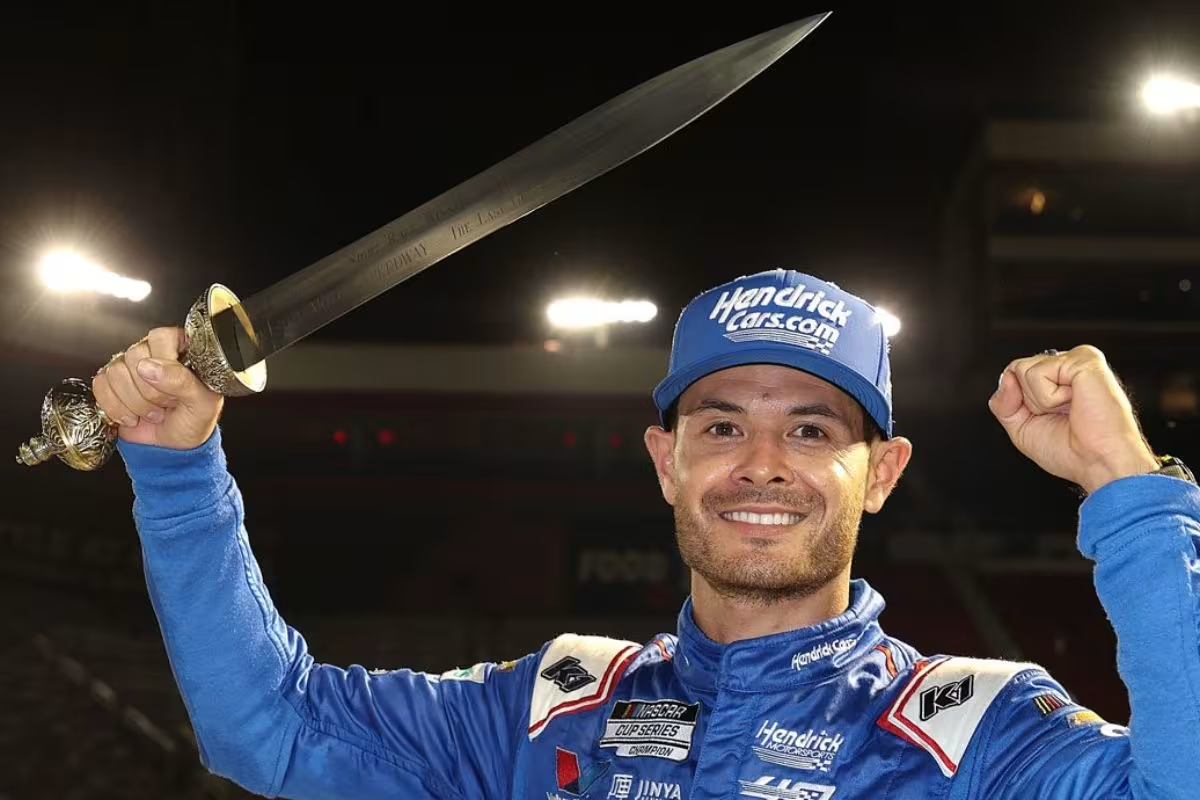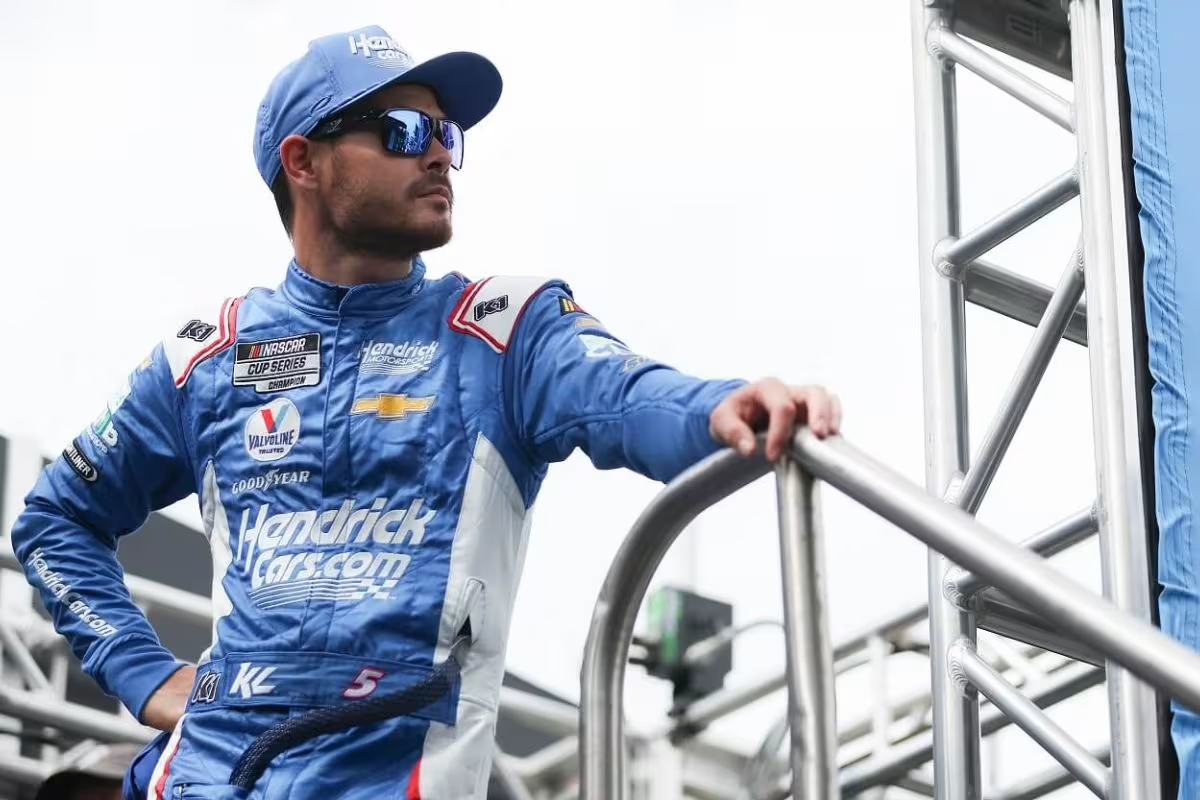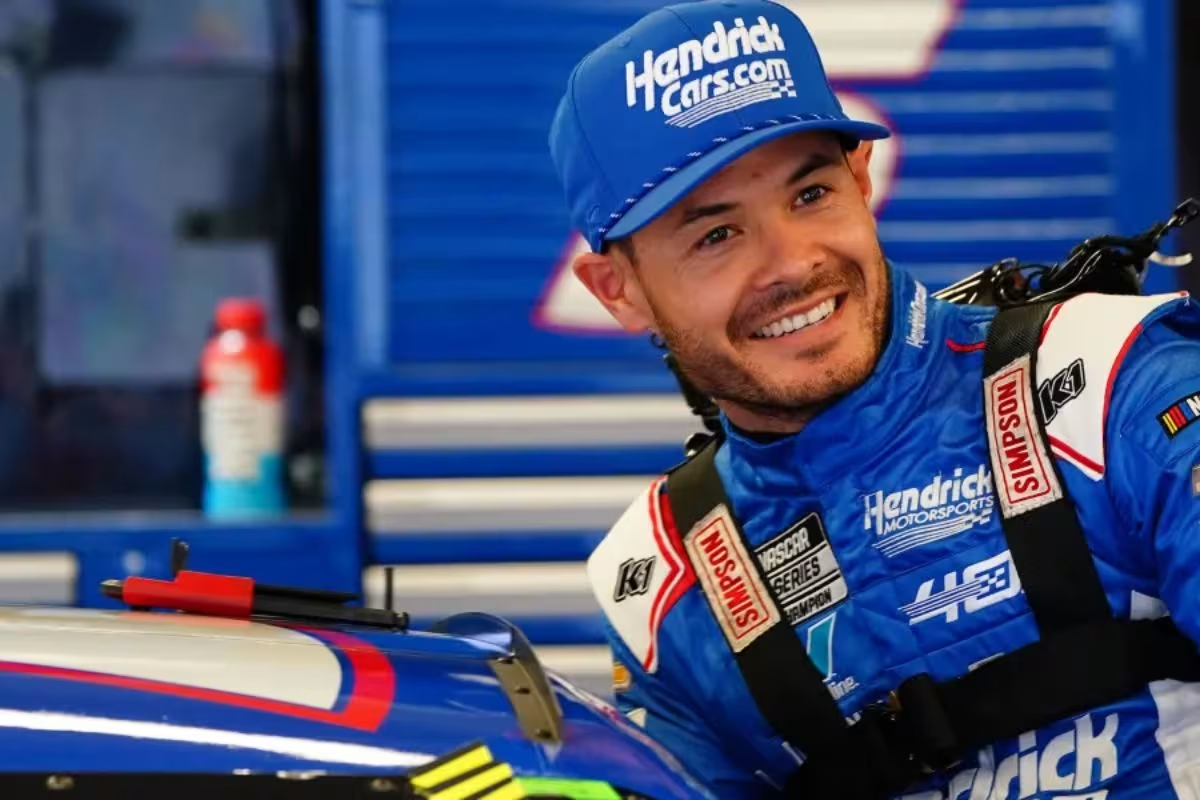Kyle Larson Backs NASCAR’s 2.3 Billion Dollar Partner: Kyle Larson‘s recent defense of Goodyear, amidst a backdrop of fan discontent following the Bristol race, highlights the complexities facing NASCAR today. While the tire supplier faces criticism over performance, Larson fans to reflect on the broader context, including the impact of the Next-Gen car’s design and current regulations. His comments suggest that the issues at play extend beyond Goodyear, inviting a deeper examination of the sport’s regulatory landscape and technological advancements. This raises critical questions about accountability and innovation within NASCAR as it navigates these challenges. What implications might this have for the future of the sport?
Key Highlights
- Kyle Larson defends Goodyear Tires, stating tire performance challenges are part of broader issues with regulations and vehicle design, not solely Goodyear’s fault.
- Following the Bristol playoff race, fans expressed frustration over predictable outcomes and lack of tire strategy, impacting race excitement.
- Larson emphasizes the importance of understanding the broader racing dynamics instead of solely blaming Goodyear for performance issues.
- Denny Hamlin’s critique of the Next-Gen car highlights insufficient horsepower as a key factor affecting competition, complicating the tire performance situation.
- NASCAR’s $2 billion partnership with Goodyear underscores the financial stakes involved in addressing fan concerns and improving overall race experiences.
Goodyear Tires Under Scrutiny at Bristol
Amidst the anticipation surrounding the playoff race at Bristol, the performance of Goodyear tires came under intense assessment as it became a focal point for both drivers and fans. Historically, tire dynamics at short tracks have been a crucial element influencing race strategies and outcomes. The spring race at Bristol had set high expectations, showcasing a thrilling spectacle fueled by excessive tire wear that forced teams to adapt their strategies dynamically.
However, last Sunday’s race deviated sharply from that narrative. The absence of considerable tire fall-off rendered the event relatively uneventful, with Kyle Larson dominating to secure his fifth win of the season. Observers noted that the lack of wear allowed for a more predictable race, diminishing the competitive edge that is often derived from tire management strategies. This outcome led to widespread frustration within the NASCAR community, which held Goodyear accountable for what many perceived as a missed opportunity for another enthralling race.
The juxtaposition of the two events highlights the volatility of tire performance in racing. While one race can excite and engage, another can disappoint, affecting not only drivers’ strategies but also fan engagement. As the examination intensifies, Goodyear faces the challenge of recalibrating their tire compounds to restore excitement at short tracks.
The outcome of such adjustments could have noteworthy implications for the integrity and competitiveness of future races, particularly as the playoffs progress. Consequently, the conversation surrounding Goodyear’s performance at Bristol denotes a critical juncture for both the tire manufacturer and NASCAR as a whole.
Kyle Larson Defends Goodyear
The Bristol race, Kyle Larson has stepped forward to defend Goodyear, emphasizing that the challenges faced during the event extend beyond tire performance. Larson’s remarks highlight a big aspect of the ongoing discourse surrounding NASCAR’s short-track package and the Next-Gen car, which has been a focal point of fan frustration.
By framing the tire issues as part of a larger problem, Larson subtly critiques the current regulations and vehicle design, suggesting that solutions require a more thorough approach.
The Bristol race saw Larson lead an impressive 462 of the 500 laps, a performance that emphasized the dominance of his team. However, the expectation of a thrilling, competitive race was upended by the lack of tire falloff, which contributed to a monotonous viewing experience.
Fans had anticipated a dynamic contest, characterized by tactical pit stops and varying tire performance, reminiscent of previous events. Instead, the race’s predictability diminished excitement, leading to increased examination of Goodyear’s products.
Larson’s defense of Goodyear is notable, as it shifts the focus from a singular blame on tire quality to a broader examination of NASCAR’s competitive framework. His insights serve as an invitation for stakeholders, including NASCAR officials and teams, to engage in a dialogue about improving the racing product.
Larson’s Comments on the Situation
How can one accurately assess the complexities of racing dynamics without placing undue blame on a single element? In the recent aftermath of the Bristol race, Kyle Larson provided a critical perspective, emphasizing that the challenges faced during the event cannot be solely attributed to Goodyear’s tires. His remarks, shared via his X account, underscore the multifaceted nature of racing where multiple factors intertwine to influence performance.
Larson pointed out the historical difficulty of overtaking at Bristol, stating, “Bristol’s ALWAYS been tough to pass.” He highlighted that the inherent characteristics of the track, such as speed on pit road and the propensity for drivers to go a lap down, have persisted for a long time.
This acknowledgment serves as a reminder that the dynamics of racing are not easily modified and are influenced by a range of elements, including track design, vehicle performance, and driver skill.
Further, Larson urged fans to reconsider their frustration with Goodyear, asserting, “It’s not a tire problem.” His comments emphasize a need for a broader understanding of the complexities involved in racing rather than a narrowed focus on a single component.
“Bristol’s ALWAYS been tough to pass. Speed on pit road, and most likely there’s a good chance you’re going a lap down on the next run. That’s the way it is and has been for a very long time…I don’t have the answer to fix what we currently have, and neither do you, but please stop blaming Goodyear. It’s not a tire problem.” – Larson
In doing so, Larson advocates for a more nuanced dialogue regarding the challenges faced by drivers and teams, encouraging stakeholders to collaboratively seek solutions that transcend mere scapegoating. His insights compel the racing community to engage in more thoughtful discussions about the sport’s intricacies and the factors that contribute to its entertainment value.
The Use of PJ1 and Spec Race Cars
One vital aspect of the current racing landscape is the use of PJ1 traction compound and its impact on spec race cars, particularly in the context of short tracks like Bristol. The application of PJ1 aims to improve grip and create multiple racing covers, addressing the issue of tire degradation that has plagued previous events.
However, this strategy has sparked considerable debate among drivers and fans alike, especially following Larson’s comments that shows the lack of firsthand experience among critics regarding the nuances of racing on PJ1-treated surfaces.
Larson’s sentiment highlights the challenges inherent in the shift to spec race cars, which are designed to level the playing field by standardizing equipment. While this uniformity can reduce disparities among teams, it also limits the drivers’ ability to optimize their vehicles for specific track conditions.
“And also, have any of you ran around Bristol with or without PJ1? Or resin for that matter. Yeah, that’s right… so 🤐 Temper your expectations. We’re driving spec race cars.”-(larson)
All this tire wear talk about Bristol got me wondering… have we ever had a lot tire wear at Bristol besides the spring of 24? Eh, not much of any. Have we seen great races there? Absolutely. Have we seen duds where Kyle Busch leads 300+laps? Sure.
From what I remember in my…
— Kyle Larson (@KyleLarsonRacin) September 24, 2024
As Larson pointed out, the experience of racing under varying conditions—whether with or without PJ1—can greatly influence performance, suggesting that expectations should be tempered when evaluating the effect of the traction compound.
Moreover, the reliance on PJ1 raises questions about the long-term implications for the sport. Will it continue to be a necessary tool for improving competition, or does it inadvertently mask the inherent challenges of short-track racing?
Denny Hamlin’s Take on the Next-Gen Car
Denny Hamlin’s critique of the Next-Gen car sheds light on the underlying issues that have emerged since its introduction. As a prominent voice within NASCAR, Hamlin has expressed considerable concerns regarding the car’s performance, emphasizing the need for fundamental changes rather than merely relying on tire modifications from Goodyear. His candid remarks suggest a broader discontent among drivers about the design and functionality of the current racing product.
“We are trying to save this car or the idea of how this car got made…Jared you were right that it is a car problem; we are trying to fix it with tires because that’s the most economical way for us to fix it. We didn’t do a good job with design from the get-go, and this is what we got.”-(HAMLIN)
Insufficient Horsepower: Many drivers, including Hamlin, are advocating for a horsepower increase to improve competition and performance.
- Design Flaws: Hamlin argues that the initial design of the car did not meet expectations, leading to a series of ongoing challenges.
- Tire Dependency: The reliance on Goodyear tires to address performance issues is seen as a stopgap rather than a solution.
- Future Development: With Next-Gen 2.0 not slated for immediate release, the urgency for effective solutions intensifies.
Hamlin’s alignment with Kyle Larson’s criticisms highlights a collective desire for considerable improvements that address the core problems rather than temporary fixes.
As NASCAR navigates this critical phase, it must balance economic considerations with the imperative to provide an ideal racing experience. Without decisive action, the sport risks alienating its drivers and fans alike, challenging its integrity and competitive spirit.
News in Brief: Kyle Larson Backs NASCAR’s 2.3 Billion Dollar Partner
Goodyear following the Bristol race highlights the complexity of the current NASCAR landscape. Kyle Larson’s defense shows the multifaceted nature of racing dynamics, suggesting that tire performance issues cannot be attributed solely to the manufacturer. Understanding the interplay between the Next-Gen car design, regulatory frameworks, and track conditions is crucial to analysis of the sport’s challenges. The discourse stresses the need for a broader perspective on the evolving intricacies of NASCAR.
ALSO READ: Kyle Larson’s Retirement Plans: How a $2 Million Investment Fits into His Future!



